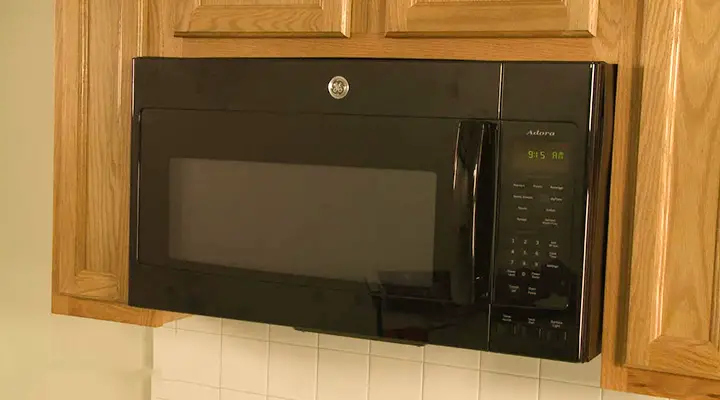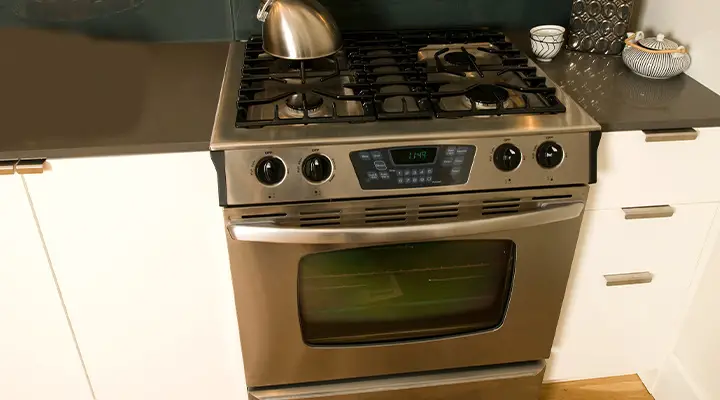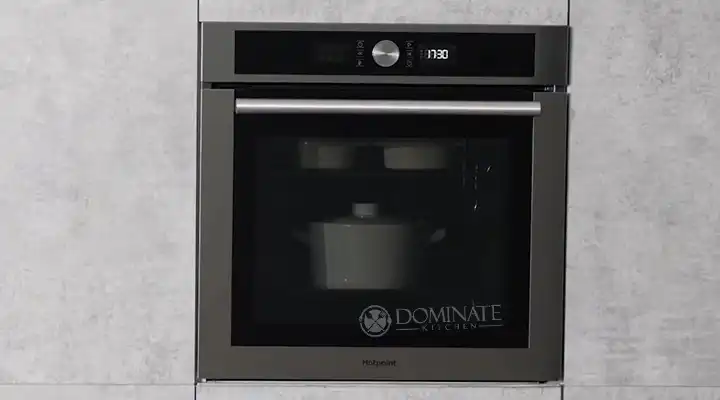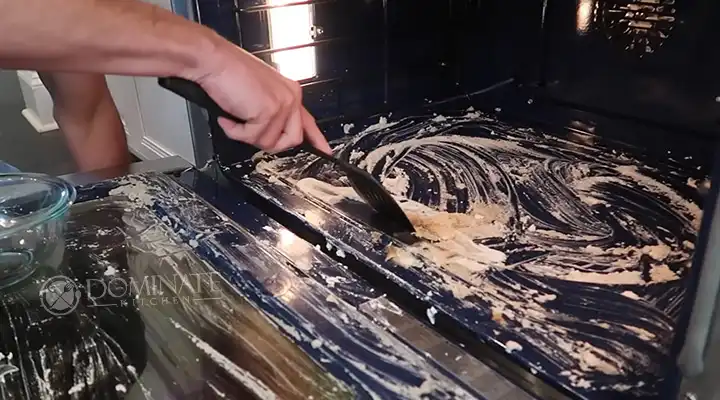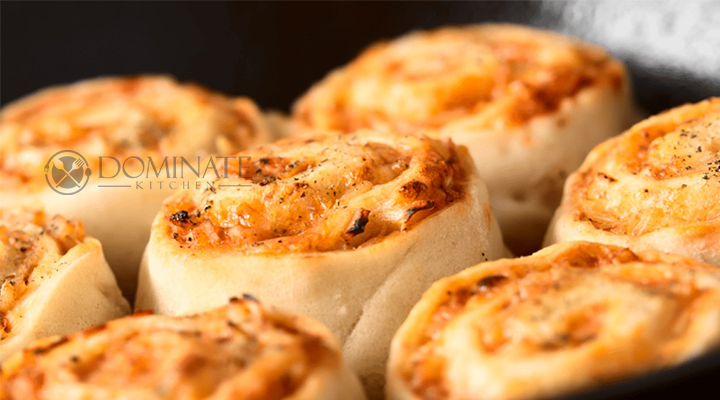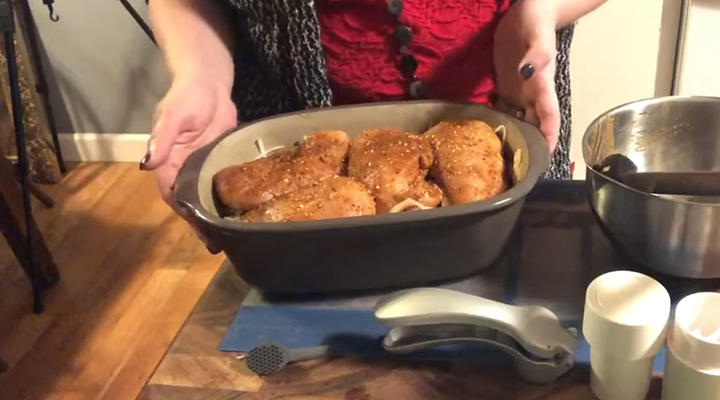Can I Put A Cold Glass Dish In The Oven? Is it Safe?
The short answer of this query is Yes, you can. We usually prepare the oven to a cooking temp before using it. The dish will bake at the proper temperature more quickly if you do this. However, what if your meal is chilly, particularly if it is made of glass? Can you bake with a cold glass?
Cold glass may go in the oven, but it is necessary to take certain safety measures. You must ensure that the glass can withstand heat. Additionally, you should stay away from sharp temperature variations. The glass may shatter if the temperature changes suddenly. If you’re considering baking cold glass, there are other factors to take into account. Additionally, some types of glass should not be placed in a preheated oven.
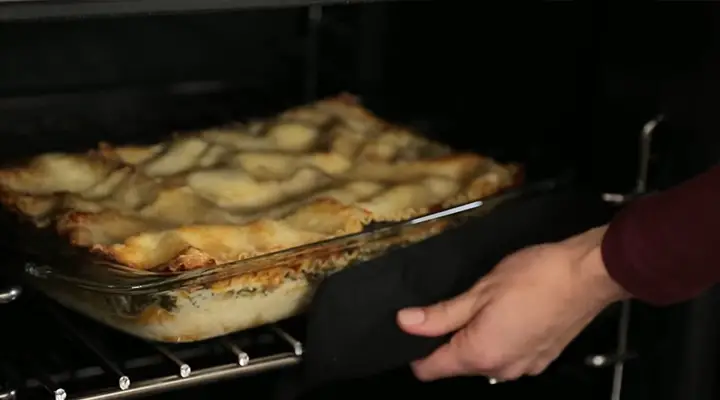
What Occurs When Glassware Is Heating
Glasses get hot initially when cooked in, which is the initial thing to occur. As you continue to heat it, you begin to alter its composition. Glass gets bendable at extremely high temperatures. Higher heat causes the glass to melt. At 1,300 °F (700 °C) to 1,600 °F (870 °C), the majority of glassware melts.
It may be sculpted into numerous forms as it cools. Glassblowers employ this idea to form the material.
Why Glass Breaks When It Gets Hot
Did you ever use a glass cup to drink freshly hot water and it broke? Far less than 1,300 °F, around 212 °F (100 °C), the liquid starts to boil. A household oven can bake at settings ranging from 300 °F (150 °C) to 500 °F (260 °C). However, occasionally a glass dish might break in the oven.
So how does glass shatter at some of these “reduced” hot temperatures if something melts at temps beyond 1,300 °F?
The explanation is that inconsistent heating causes the glass to crack.
Conductivity
Heat does not transmit well through glass. This indicates that warmth has a difficult difficulty passing across glass. It is still possible to warm it up, but you must do it slowly since the heat doesn’t really immediately permeate throughout.
The temperature of the remainder of the glass is lower than the heated region, which heats up quickly. Glass is not a good conductor of heat as materials like aluminum.
The steel pan may be heated in a limited region and become hot throughout in a matter of seconds. The major cause of uneven heating in glassware is poor conduction. And the glass breaks as a result of the temperature being uneven.
Both Expansion as Well as Contraction
Heat causes things to stretch. Since the molecules are packed with a charge from the temperature, they expand. They, therefore, begin to move. The substance compresses as it cools. Molecules lose energy when they are cooled. They thus tend to unwind and grow closer.
Glasses are poor heat conductors, therefore heating a portion of it causes that portion to heat up fast. The glass’s remaining surface is still mostly cold. The heated component also increases swiftly as a result of this. The remainder of the glass is still contracted despite this. The forces of growth and contraction are antagonistic.
The damaged portion yields and fractures when the space between is large enough. The antagonistic expansion and contraction are stronger the greater the temperature discrepancy. The likelihood of breaking increases with the strength of the warring factions. Thermal shock is the tension created by two opposite forces.
Before Placing Cold Glassware in the Oven
You can check and keep in mind the following tips and tricks before placing your glassware in the oven.
Verify the Oven Safety of the Glass
Checking whether the glassware is oven-safe must be your first step. Glass that is heat-resistant in ovens. The glass is probably oven-safe if it is Pyrex, Pyroceram, and otherwise, Corelle branded.
In case it isn’t or if you like being certain, seek again for the oven-safe emblem. Sadly, “oven-safe” doesn’t have a universal symbol. Thus, the sign may appear slightly differently on glasses made by various manufacturers. Typically, a little depiction of an oven would be on it. Underneath it would be labeled “oven-safe”.
Use Moderate Temperatures
Use the fairly lowest heated setting if the objective is to safely cook your meal in the oven. By doing this, you minimize the heat shock that the glass dish suffers.
Heat it Up a Little
The objective is to minimize thermal shock to reduce the likelihood of glass breaking. You may warm up the meal in addition to operating the oven at a low temp.
Do not however simply leave it out on the countertop. Place it in a bigger dish or a water-filled basin. Your food should be as near to room temp as possible. This process can take a little time, so if you’re on time crunch, do this beforehand.
Avoid Preheating
It may not be a great idea to place the glasses or dish inside a preheated oven if it is just taken out of the refrigerator. Place it in the oven when it’s still cool or turned off, then heat it to the appropriate setting. The meal slowly warms in the oven this way. By using this technique, the thermal stress that glass may endure is reduced.
Look For Dents And Splits.
This is something you should do, particularly if their cookware is old. Small prior fractures degrade the dish. It may not be capable of withstanding thermal shocks that are more severe. It might be preferable to shift the meal to some other oven-safe container when there are fractures or scrapes.
Before and after placing the glassware in the oven, inspect it for breaks and minor scratches. It is safe both for yourself and anybody who will consume the dish if you repeat the process after taking it out of the oven. After taking the dish out of the oven, if you see a new crack, check to see whether any pieces have broken off and gotten into the meal.
How to Handle a Broken Glass in an Oven
Say you made an effort to follow the rules exactly. You eventually turn to check inside your oven. Sadly, the stars weren’t in your favor. Inside the oven, the glassware dish cracks. You spilled dinner, and broken fragments are everywhere. You can take the actions listed below.
Shut Off the Oven
Shut down the oven; there’s no purpose in leaving it heated. When you begin washing, let it cool, but avoid letting it go cold. Sit tight till the weather is barely tolerable. Food crumbs and stains will be present on the oven’s floors and walls. If those are a little heated, cleaning them will be simpler.
Save Yourself
You’ll clean up hot food spills and glass fragments. Therefore, to prevent getting injured or cut, use gloves and otherwise mitts.
Gather the Pieces
The fragments shouldn’t be too huge or pointy if the container was constructed of heat-resistant glassware. Heat-resistant glassware that has been reinforced in some ways fractures different from conventional glassware.
Reinforced glass shatters into a number of small cube-shaped fragments. Comparatively speaking to, say, a shattered beer bottle, these fragments are quite uninteresting. To be safe pays off, though. Avoid cutting yourself at all costs. The parts may be pushed together with a big spoon. A paintbrush can also be used.
Frequently Asked Questions
Can A Glassware Dish Go Directly From The Refrigerator To The Oven?
Although it would probably be fine, we would place it in the oven on the room temp baking tray (preferably one that is rather thick). By doing this, the heat stress brought on by the shelf’s bars will be avoided.
What Determines A Glass Dish’s Oven Safety?
Although the majority of glass dishes are oven-safe, this is not a given. You may use a cooker, a toaster cooktop, or a microwave if the cookware is constructed of heat-resistant glassware. Before using these items, be sure to check for the oven-safe mark.
In An Oven, at what Temperatures Does Glass Split?
Since glass is poor thermal conductive, sudden temperature swings of 60°F or more may cause stress cracks in the material, which may ultimately lead to splits. Thin crystal tends to shatter while heating and commonly breaks about 302–392°F.
Conclusion
Your answer is very simple, glassware can go in the oven, but it may also rely on the sort of glass container you have and what material it is composed of. You may transfer glass baking ware made for oven use from the refrigerator to the oven. Glass bowls don’t hold up well to abrupt temperature fluctuations. If the temperature varies rapidly, they might crack or break. Keep it in mind as well.

